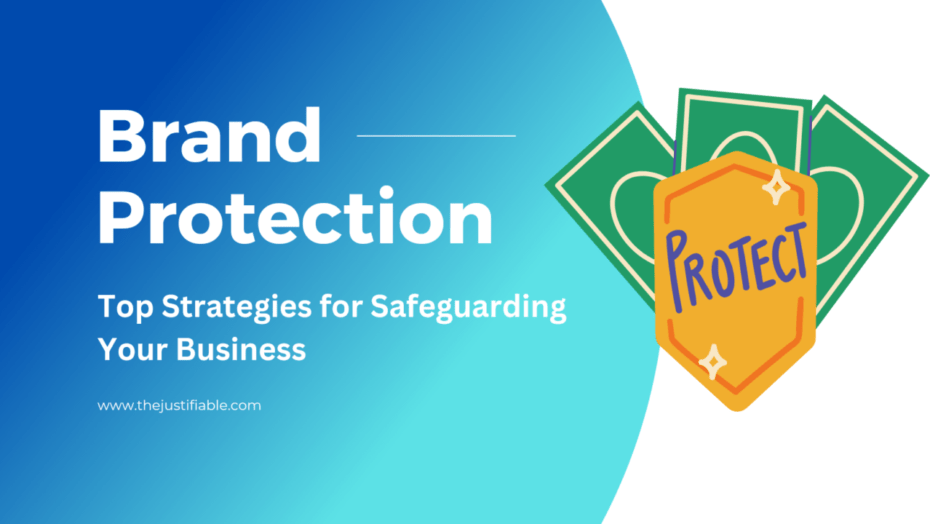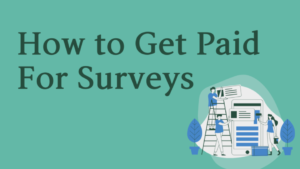Table of Contents
In today’s competitive and fast-paced digital world, the essence of a company isn’t just defined by the services it provides or the products it manufactures, but by the identity it showcases — its brand.
Recognized in logos, slogans, and even company ethos, a brand serves as the unique fingerprint of a business. With the rise in brand impersonation and imitation, it has become paramount for businesses to understand the significance of brand protection.
What is brand protection?
Brand protection can be defined as a set of measures, strategies, and proactive steps employed by businesses to guard against brand abuse, counterfeit products, trademark infringements, and any other activities that could tarnish or dilute the brand’s value and reputation.
In essence, it’s like placing a protective shield around your company’s identity, ensuring that only the genuine representation of your brand reaches your audience. Whether it’s the tangible elements like product packaging and logos or intangible aspects like company reputation and customer trust, brand protection ensures they remain uncompromised.
Why is safeguarding your brand crucial for businesses?
Safeguarding a brand isn’t merely a strategy; it’s a necessity in today’s commercial landscape. Here’s why:
- Maintaining Customer Trust: Consumers trust brands that deliver consistency. When counterfeit products flood the market, they undermine this trust. By ensuring your brand is protected, you’re also ensuring that customers always receive the genuine product or service they expect.
- Financial Implications: Counterfeit products or services can lead to significant financial losses. Not only do businesses lose revenue to these fraudulent imitators, but they also might have to invest in damage control if consumers mistakenly associate subpar counterfeit products with the genuine brand.
- Preserving Company Reputation: A brand is as good as its reputation. If counterfeit or poor-quality imitations are mistaken for the real deal, it can quickly tarnish a company’s standing in the market. Protecting your brand means preserving your hard-earned reputation.
- Competitive Advantage: A well-protected brand offers a competitive edge. When consumers know they’re buying the genuine article, they’re more likely to choose a trusted brand over others in the market. Brand protection, therefore, helps in maintaining and amplifying this competitive advantage.
In summary, brand protection isn’t just about fending off imitators or counterfeiters; it’s about preserving the very essence of what your business represents. It’s about ensuring that every interaction a consumer has with your brand is genuine, trustworthy, and consistent with the promise you’ve made to them.
The Rising Threats to Brand Integrity
As we delve deeper into the digital era, brand protection has morphed from being a straightforward endeavor to a more complex task. The immense benefits brought about by global connectivity also usher in threats that jeopardize brand integrity.
From the bustling markets of counterfeit goods to the unseen corridors of digital piracy, businesses today face multifaceted challenges in preserving their brand’s authenticity and value.
Counterfeiting and its impact on businesses.
Counterfeiting, once restricted to luxury goods and designer labels, has now permeated nearly every sector. With advancements in production technology, counterfeiters today can replicate products with astonishing accuracy, making it challenging for even discerning consumers to distinguish genuine items from fakes. This widespread counterfeiting results in brand protection becoming paramount.
When consumers unknowingly purchase counterfeit goods believing them to be genuine, it erodes their trust in the original brand. Even though the brand itself isn’t at fault, the inferior quality of counterfeits negatively reflects on it.
Besides the obvious financial losses from diverted sales, brands spend considerably on legal battles to reclaim their market position and defend their reputation. Additionally, counterfeiting often funds illicit activities, meaning that brands inadvertently become associated with criminal networks, further tarnishing their image.
Digital piracy and intellectual property theft.
In the digital realm, piracy reigns supreme as one of the most pervasive threats to brand protection. The unauthorized replication and distribution of copyrighted material, be it software, music, films, or e-books, deprive creators of their rightful earnings.
Beyond the immediate financial implications, digital piracy can undermine a brand’s perceived value. When intellectual property is freely available without consequence, it sends a message that the brand’s offerings lack exclusivity and worth.
Furthermore, intellectual property theft isn’t limited to digital content alone. Trade secrets, patents, and proprietary processes also fall victim to theft, with competitors often seeking shortcuts to success at the expense of the innovating brand. The outcome? Brands face an uneven playing field, with their unique offerings diluted in a sea of imitations.
Online reputation damage and misinformation.
The power of the internet lies not just in its connectivity but in its ability to amplify voices. Unfortunately, this power can be a double-edged sword for brands. A single negative review, whether accurate or not, can spiral into a brand-damaging viral sensation overnight. Misinformation, whether borne from genuine misunderstandings or malicious intent, can wreak havoc on a brand’s reputation.
Misinformation campaigns, sometimes sponsored by competitors, can spread false information about a brand’s products, ethics, or operations, leading consumers to question their loyalty. Furthermore, the digital age has seen the rise of ‘cancel culture’, where brands can face severe backlash from netizens based on past actions or perceived missteps.
Addressing online reputation damage necessitates a vigilant approach. Brand protection in this context is as much about proactive reputation management as it is about countering falsehoods. This dual approach ensures that a brand’s digital persona remains both authentic and favorable in the eyes of its audience.
Key Brand Protection Strategies for Your Business
In the evolving commercial landscape, a brand’s value isn’t just in its tangible assets but also in its intangible appeal and recognition. Brand protection, therefore, is not an optional strategy but a central component of modern business practices.
Recognizing and responding to threats with agility and precision requires a blend of traditional legal frameworks and cutting-edge digital tools. Let’s explore some of the pivotal brand protection strategies that businesses can employ to shield their legacy and value.
Trademark registration and its benefits.
One of the foundational steps in brand protection is securing a trademark for your brand elements—this includes the brand name, logo, and any other distinctive symbols associated with your business. A registered trademark legally signifies that a particular brand element belongs exclusively to your business within specified categories or sectors.
The benefits of trademark registration for brand protection are manifold. Firstly, it offers legal exclusivity, preventing competitors from using anything strikingly similar that could confuse consumers. This exclusivity is not just a passive right; it enables businesses to take legal action against unauthorized usage, ensuring that brand impersonators are held accountable.
Moreover, a registered trademark enhances the brand’s value by adding a layer of credibility. It indicates to partners, investors, and consumers that the business is serious about its identity and has taken steps to protect it.
Monitoring online platforms for counterfeit products.
In our digital age, e-commerce platforms and online marketplaces have become hotbeds for counterfeit goods. These platforms, with their vast reach, enable counterfeiters to tap into a global audience with ease. Hence, brand protection must involve vigilant monitoring of these platforms.
Continuous scanning of major e-commerce sites can help businesses spot counterfeit or unauthorized listings of their products. By establishing partnerships with these platforms, brands can ensure swifter takedowns of counterfeit listings, thereby minimizing their impact.
Moreover, many e-commerce giants have programs designed to aid businesses in brand protection, providing tools and resources to spot and report infringements.
Utilizing digital rights management tools.
For businesses operating in the digital content space, brand protection extends to safeguarding their intellectual property from unauthorized access, copying, and distribution. Enter Digital Rights Management (DRM) tools – sophisticated technologies designed to protect digital content.
DRM tools work by attaching a protective layer to digital content, controlling its usage, access, and distribution. For instance, they can limit the number of devices on which an eBook or software can be accessed, or they can prevent users from copying, modifying, or sharing the content without authorization.
While sometimes debated for their impact on user experience, there’s no denying the power of DRM tools in brand protection. They ensure that creators and businesses retain control over their digital content, preserving its value and preventing revenue leakage.
Harnessing the Power of Digital Tools for Brand Protection
In today’s digital-first environment, brand protection has evolved far beyond the confines of legal documentation and intellectual property rights. Now, the frontline of defense for brands is often found in the digital realm, where a plethora of tools and technologies await to fortify businesses against infringements.
Leveraging these digital tools can give businesses a proactive stance, ensuring they’re always a step ahead in the continuous endeavor of brand protection.
Advanced software solutions for detecting brand misuse.
The vast digital landscape can sometimes feel like a minefield for brands, with infringements lurking in unexpected corners. Advanced software solutions have emerged as indispensable allies in navigating this terrain. These tools regularly scan the web, from e-commerce platforms to blogs and forums, searching for unauthorized use of brand assets.
For instance, image recognition software can trawl the internet to find unauthorized uses of a brand’s logo or product images. These sophisticated tools don’t just detect exact matches but can also identify slightly altered or manipulated versions of the original, ensuring that even subtle brand misuses don’t fly under the radar.
When combined with algorithms that analyze context, these software solutions can differentiate between fair use, such as in reviews or news articles, and potential infringements. Such granularity ensures that brands can act decisively without curbing genuine discussions or engagements.
Social media monitoring and rapid response.
Social media platforms have become central to brand interactions. However, with this elevated engagement comes the risk of brand misuse or misrepresentation. Social media monitoring tools are vital for brand protection in this volatile space.
Beyond the basic function of tracking brand mentions, these tools can assess sentiment, pinpointing potential PR crises before they escalate. If a user is spreading misinformation or using a brand’s assets without permission, a swift response is crucial.
By integrating with customer service or public relations teams, these monitoring tools can facilitate almost instantaneous responses, ensuring that brand narratives remain consistent and controlled.
Moreover, with features like geotagging and influencer tracking, brands can get a holistic view of their social media presence, helping them strategize their brand protection efforts effectively.
AI and machine learning’s role in proactive brand protection.
Artificial Intelligence (AI) and machine learning are reshaping the brand protection paradigm, moving it from a reactive to a proactive stance. These technologies excel in pattern recognition, allowing them to predict potential threats based on historical data and emerging trends.
For instance, AI-driven tools can analyze vast datasets to identify emerging counterfeit hotspots or e-commerce listings that have a high likelihood of being fraudulent. Machine learning algorithms, trained with instances of past infringements, can trawl digital platforms and flag potential threats even before they manifest as tangible issues.
Beyond detection, AI tools can also assist in automating takedown requests, liaising with platform administrators, and even gathering evidence for potential legal actions. Their ability to work tirelessly ensures that brand protection is an around-the-clock endeavor, shielding businesses from the relentless onslaught of digital threats.
Educating Stakeholders: An Overlooked Aspect of Brand Protection
When businesses think of brand protection, the mind often leaps to legal measures, digital tools, and proactive monitoring. Yet, one of the most potent elements of brand protection lies in a more foundational realm: education.
A brand is not a standalone entity; it thrives within a complex ecosystem involving employees, partners, suppliers, and, crucially, the consumers themselves. Empowering these stakeholders with knowledge can fortify a brand’s defenses, creating a collective guard against potential threats.
Training employees on brand guidelines and potential threats
Employees, from top-tier executives to frontline staff, are the first ambassadors of any brand. Their interactions, both within and outside the organizational setting, can significantly influence brand perception. As such, ensuring that they are well-versed with brand guidelines is paramount.
Brand training sessions, workshops, or even digital courses can be invaluable in familiarizing employees with the nuances of the brand identity – its values, voice, and visual elements. Such sessions also provide an opportunity to shed light on potential threats, such as phishing scams targeting brand secrets or unauthorized use of brand assets.
By integrating brand protection awareness into employee onboarding and continuous training programs, businesses ensure that their workforce remains vigilant, always operating in ways that prioritize and amplify the brand’s authenticity.
Partnering with suppliers and distributors to ensure brand consistency
Suppliers and distributors play a pivotal role in how a brand is presented and perceived, especially in markets where the business doesn’t have a direct presence. However, unintentional inconsistencies, or worse, intentional deviations, can dilute the brand’s essence.
Regularly engaging with these partners, not just in transactional terms but also in educative capacities, can make a world of difference. Workshops focusing on brand guidelines, quality standards, and packaging protocols can instill a sense of ownership and alignment among these external stakeholders.
Furthermore, maintaining open channels of communication allows for rapid course correction should any inconsistencies arise. This mutual feedback loop not only ensures brand consistency but also fosters a sense of collaborative growth, with all stakeholders working towards a shared vision of brand success.
Engaging consumers about authentic brand engagement and the dangers of counterfeits
Consumers are more than just passive recipients of brand messages; they are active participants in the brand narrative. Their loyalty, advocacy, and feedback are instrumental in shaping a brand’s trajectory. As such, educating them about the hallmarks of authentic brand engagements and the perils of counterfeits becomes a cornerstone of brand protection.
Campaigns highlighting the unique identifiers of genuine products, or narratives showcasing the journey of authenticity from production to purchase, can resonate deeply with consumers. By showcasing the tangible and intangible costs of counterfeits, from inferior quality to the funding of illicit activities, brands can rally consumers to their defense.
Furthermore, platforms that allow consumers to verify the authenticity of their purchases or report suspicious products can act as an extended arm of brand protection. By giving consumers the tools and knowledge to differentiate the genuine from the fake, businesses transform them into vigilant guardians of the brand’s integrity.
Case Studies: Lessons from Brands that Excelled at Brand Protection
Navigating the complex terrain of brand protection can seem daunting, but numerous brands, spanning various industries, have charted successful courses in this domain.
Their stories, filled with challenges and innovations, serve as both inspiration and guidance for businesses looking to fortify their brand defense. Diving deep into a few case studies, we discover actionable insights and strategies that have stood the test of time.
The luxury industry’s fight against counterfeits
Few industries grapple with counterfeiting as intensely as the luxury sector. Given the premium prices and the aspirational status of luxury products, they become prime targets for counterfeiters looking to cash in on their prestige.
One of the pioneers in this fight has been the iconic fashion house, Chanel. Realizing the massive influx of fake handbags in the market, Chanel launched a multifaceted brand protection campaign.
Apart from legal actions and continuous monitoring of online marketplaces, they leaned heavily into consumer education. They launched detailed guides on recognizing genuine Chanel products, highlighting nuances like stitching patterns, logos, and hardware quality.
Moreover, leveraging technology, many luxury brands have now incorporated microchips and unique serial numbers in their products. This not only facilitates authentication but also adds a layer of exclusivity, further enhancing the luxury experience.
The lesson? Proactivity combined with consumer engagement can thwart even the most pervasive threats.
How tech giants shield their IP in the digital era
Tech titans like Apple and Microsoft operate in a landscape where intellectual property (IP) isn’t just about product designs but also software, algorithms, and even user interfaces. Protecting this vast expanse requires a blend of legal prowess and technological innovation.
Apple, for instance, is renowned for its stringent defense of its IP rights. Their legal teams are always on alert, ensuring that any potential infringements, whether by global competitors or small-scale entities, are addressed swiftly.
But beyond the courtroom battles, Apple also ensures IP protection through product design. Their hardware and software are closely integrated, making unauthorized replication challenging.
Microsoft, on the other hand, has taken the collaborative route. Realizing the omnipresence of its software, they introduced the Windows Genuine Advantage program. It not only identifies counterfeit software but also offers users incentives to switch to genuine versions. By doing so, Microsoft turned a potential brand protection challenge into a consumer loyalty opportunity.
From these tech giants, we learn that brand protection in the digital age is as much about deterrence as it is about collaboration and user engagement.
Success stories from SMEs that implemented strong brand protection strategies
While large corporations often dominate brand protection discussions, Small and Medium Enterprises (SMEs) too have their share of triumphs in this arena.
Consider the story of a boutique coffee roaster from Portland. When they discovered a strikingly similar brand operating in Europe, they could have been overwhelmed. Instead, they leaned into community engagement.
Harnessing the power of social media, they shared their origin story, emphasizing their unique roasting process and community involvement. Their loyal customer base rallied, amplifying the brand’s genuine narrative and organically pushing out the imposter.
Another inspiring tale comes from a tech start-up specializing in eco-friendly gadgets. They invested early in patenting their unique designs and also in digital rights management tools.
When knock-offs began appearing on online platforms, they were prepared. A combination of swift legal actions and digital takedowns ensured their brand’s integrity remained untarnished.
These SMEs underscore a vital lesson: brand protection isn’t about scale; it’s about strategy, foresight, and engagement.
The Future of Brand Protection: Trends and Predictions
As we navigate the intricate landscape of business in the digital era, brand protection remains a dynamic field, continuously evolving to meet the challenges of an interconnected world.
New technologies, global collaboration, and a more empowered consumer base are ushering in a future where brand protection isn’t just a reactive endeavor but a proactive strategy that shapes the brand narrative. Let’s delve into some of the emerging trends and predictions that are set to redefine the future of brand protection.
The rise of blockchain in verifying product authenticity
Blockchain, once a niche term associated predominantly with cryptocurrencies, is steadily making its presence felt in the realm of brand protection. Its decentralized and immutable nature makes it an ideal tool for verifying product authenticity.
Imagine buying a luxury watch or a limited edition art piece. With blockchain technology, each product can be linked to a unique digital token, providing a traceable record of its origin, ownership, and transaction history. This not only ensures authenticity but also enhances the product’s narrative, offering consumers a transparent journey from creation to purchase.
Companies like Everledger are already harnessing blockchain to trace the lifecycle of diamonds, ensuring ethical sourcing and genuine quality. Such applications can be a game-changer, particularly in industries where counterfeits are rampant.
As blockchain technology becomes more accessible and its applications more diverse, it’s poised to become a linchpin in brand protection strategies, offering brands and consumers alike a reliable, transparent method to ensure product genuineness.
New international legislations and collaboration to combat brand threats.
In an era where businesses operate on a global scale, brand protection can no longer be viewed through a localized lens. Recognizing this, nations and global bodies are coming together to craft international legislations that address brand threats in a holistic manner.
Such collaborations aim to harmonize trademark registrations, standardize anti-counterfeit measures, and facilitate swifter legal actions across borders. The recent talks in international forums about creating a unified database for registered brands, accessible to customs officials worldwide, is a testament to this collaborative spirit.
In the future, we can anticipate more such partnerships, both on governmental and inter-industry levels. These alliances will not only streamline brand protection efforts but also send a strong, unified message to counterfeiters and infringers: brand threats are a global concern, met with cohesive resistance.
The evolving role of consumers in brand protection.
Consumers, in today’s digital age, are no longer passive players. Armed with information and a platform to voice their opinions, they are becoming active participants in the brand protection narrative.
Brands are recognizing this shift, and many are channeling it proactively. Through campaigns that educate consumers about the significance of genuine products, to apps that allow product verification, the line between brand and consumer is blurring in the brand protection arena.
Moreover, the rise of user-generated content, reviews, and community forums means that any deviation from brand promises is swiftly noted and highlighted. This crowdsourced vigilance acts as an additional layer of brand protection, ensuring that companies remain true to their values and offerings.
Looking ahead, this consumer-brand partnership is likely to strengthen. Brands that harness this collaboration, viewing consumers as allies in their brand protection endeavors, will not only safeguard their legacy but also foster deeper, more authentic consumer relationships.
Conclusion: Embracing a Holistic Approach to Brand Protection
In today’s rapidly evolving business landscape, the importance of brand protection has never been more paramount. Brands aren’t merely logos or catchy slogans; they’re intricate tapestries of values, promises, and consumer trust.
And as these brands navigate the digital age, the challenges to their integrity grow more diverse and sophisticated. The future of brand protection, then, lies not just in responding to threats but in anticipating them, embracing a holistic strategy that melds the tried-and-true with the revolutionary.
Combining traditional and digital strategies for optimal brand security
The pillars of traditional brand protection, such as trademark registration, vigilant legal teams, and robust supply chain monitoring, remain as relevant today as they were decades ago. They provide a sturdy foundation, ensuring that brands have a tangible, recognized presence and a legal recourse against infringements.
But, given the ubiquity of the digital realm, it’s essential that these traditional methods seamlessly integrate with digital strategies. The power of blockchain in product verification, AI-driven monitoring tools to detect brand misuse, or even algorithms that spot counterfeit products in online marketplaces are just the tip of the iceberg when it comes to the potential of digital brand protection.
Therefore, for brands aiming for optimal security, the path forward is clear: a symbiotic relationship between traditional and digital methods. This blended approach ensures a comprehensive shield, defending the brand against threats from all quarters, whether they emanate from physical marketplaces or the vast expanse of the internet.
Building a brand protection culture in your organization
While tools, technologies, and legal frameworks are integral to brand protection, the heart of this endeavor is the people behind the brand. The employees, partners, and even the consumers play pivotal roles in ensuring a brand’s integrity.
Creating a brand protection culture means investing in training and awareness. Employees should be well-versed in the brand’s values, its visual and tonal guidelines, and the potential threats it faces. This internal vigilance often acts as the first line of defense, spotting inconsistencies or infringements before they escalate.
Similarly, partnerships with suppliers, distributors, and even competitors can amplify brand protection efforts. A collective, industry-wide stance against counterfeits or intellectual property theft can deter potential infringers more effectively than isolated actions.
And, as we’ve seen, consumers too are crucial allies in this journey. Engaging them, educating them about genuine products, and fostering a sense of community ensures that they not only buy authentic products but also advocate for the brand, amplifying its genuine narrative.
In essence, brand protection isn’t a siloed department or a periodic initiative. It’s an ethos, woven into the very fabric of the organization, championed by every stakeholder, from the CEO to the consumer.







